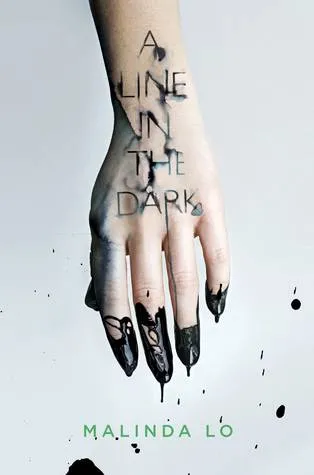
The Elusive L Word
This content contains affiliate links. When you buy through these links, we may earn an affiliate commission.
Bee Oder is on her way to working full time in libraries, after a while working full time in schools. She decided to change because there wasn’t enough time spent talking about books. She has degrees in Creative Writing and Teaching, and is on her way to securing a Masters in Information Management. Born and raised in Melbourne, Australia, Bee has spent time living in the U.S. and the UK before settling back home—she finds that Melbourne has the best weather for reading and writing, as well as the best bookstores. You can find her taking photos of LGBT+ books on Instagram @lesbeebooks or else co-running the tumblr-based digital zine, The Butchery.
I made a reading resolution at the start of the year: read more lesbians. It’s actually a more elusive prompt than it seems—I’m really only taking what I can get. What I really mean by “read more lesbians” is “actively seek out books by, about, or including women-loving-women.” This resolution came a little late. I overshot the New Year’s deadline by a few months. The actual igniting spark was my first New Year goal, which was to read more and keep myself on track with a Bookstagram account. I started the account, picked a theme, and posted some photos. In trying to stick to my agenda of LGBT+ books (again: by, about, including), I realised that most of what was in my bookshelf was focused on gay, bisexual, pansexual, or queer men. Elsewhere, writers have commented that Sarah Waters is the anomaly of lesbian fiction, having broken the mainstream and become a bestseller and prize-winner. It is perhaps ironic that she held a similarly lone place on my shelves. I scolded myself and decided that the jig was up. If I was going to make 2018 the true twenty-gay-teen of Hayley Kiyoko’s dreams, I would have to be more active and conscious about reading lesbians. Wide though that net was, finding the fish proved a challenge. A lot of searching and tag-mining later, I was armed with a list from which to inject lesbian goodness into my book collection. But I had also noticed something that worried me a little. In popular lists, on popular Bookstagram accounts, all over the reaches of tumblr-based fandom, there was a definite lean towards M/M fiction. There seemed to be some kind of disconnect there: people studying and analysing fandom demographics have claimed time and again that fandoms are largely made up of women—and a majority lesbian, bisexual, pansexual, and queer women at that. Regardless of this demographic, everywhere I turned there was The Song of Achilles, Aristotle and Dante, The Raven Cycle. Even The Secret History. Book after book, and fandom after fandom, all clamouring for M/M couples. The question of why this happens is so obvious it probably doesn’t bear asking. I asked it anyway. Querying my meagre group of WLW tumblr followers about their preference for M/M fiction actually garnered more responses than I was expecting. The answers were more than I was expecting, too. The general reasons given were:
I made a reading resolution at the start of the year: read more lesbians. It’s actually a more elusive prompt than it seems—I’m really only taking what I can get. What I really mean by “read more lesbians” is “actively seek out books by, about, or including women-loving-women.” This resolution came a little late. I overshot the New Year’s deadline by a few months. The actual igniting spark was my first New Year goal, which was to read more and keep myself on track with a Bookstagram account. I started the account, picked a theme, and posted some photos. In trying to stick to my agenda of LGBT+ books (again: by, about, including), I realised that most of what was in my bookshelf was focused on gay, bisexual, pansexual, or queer men. Elsewhere, writers have commented that Sarah Waters is the anomaly of lesbian fiction, having broken the mainstream and become a bestseller and prize-winner. It is perhaps ironic that she held a similarly lone place on my shelves. I scolded myself and decided that the jig was up. If I was going to make 2018 the true twenty-gay-teen of Hayley Kiyoko’s dreams, I would have to be more active and conscious about reading lesbians. Wide though that net was, finding the fish proved a challenge. A lot of searching and tag-mining later, I was armed with a list from which to inject lesbian goodness into my book collection. But I had also noticed something that worried me a little. In popular lists, on popular Bookstagram accounts, all over the reaches of tumblr-based fandom, there was a definite lean towards M/M fiction. There seemed to be some kind of disconnect there: people studying and analysing fandom demographics have claimed time and again that fandoms are largely made up of women—and a majority lesbian, bisexual, pansexual, and queer women at that. Regardless of this demographic, everywhere I turned there was The Song of Achilles, Aristotle and Dante, The Raven Cycle. Even The Secret History. Book after book, and fandom after fandom, all clamouring for M/M couples. The question of why this happens is so obvious it probably doesn’t bear asking. I asked it anyway. Querying my meagre group of WLW tumblr followers about their preference for M/M fiction actually garnered more responses than I was expecting. The answers were more than I was expecting, too. The general reasons given were:
- the drawcard of representation (being gay and wanting to read/watch gay things);
- the basic fact of there being more MLM content out there (which we can see pretty straight up from something like the GLAAD Where Are We On TV report—55% of regular/recurring LGBT+ characters on primetime TV are cis men);
- MLM ships are more popular in fandom spaces (just at a quick glance, 291,181 results for F/F on AO3 as opposed to 1,786,633 for M/M), so are easier to find and jump on board;
 A Line in the Dark by Malinda Lo
A Line in the Dark by Malinda Lo






